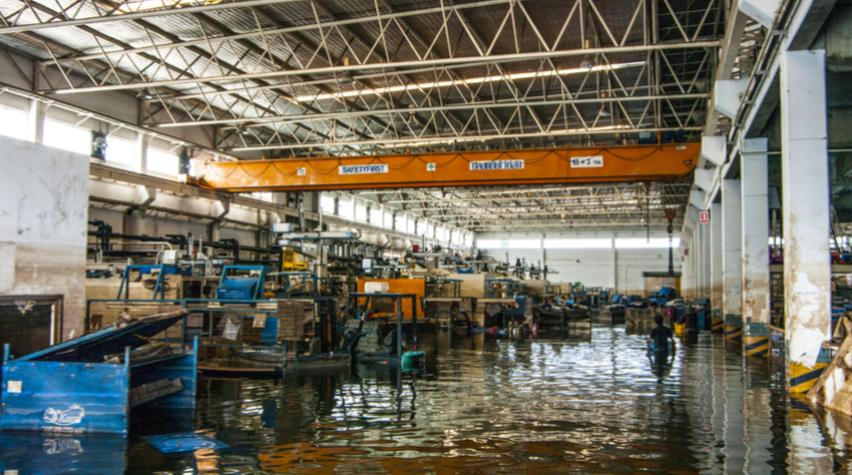
Hurricane Harvey hit the Gulf Coast in August 2017, dropping historic levels of rain on the Houston, TX, area. Flooding caused an Arkema facility outside Houston to lose power to its coolant system, as well as its inundated backup power generators. Without sufficient cooling, stores of organic peroxides began to degrade, catch fire, and explode. This high-profile incident cost the company product and infrastructure, as well as public confidence — reflected in slumping stock prices.
Resilience programs becoming more common
Extreme weather events like Harvey and other disasters, such as earthquakes, disease outbreaks, and terrorist attacks, are often unavoidable and hard to predict. More companies are incorporating a resilience strategy into their business plans to help withstand the inevitable disruption.
Resilience is the ability to adapt and thrive in the face of disturbances and changes. These changes can range from sudden shocks, such as war, natural disasters, and outbreaks of disease, to gradual changes, such as rising sea levels, aging infrastructure, and macroeconomic trends. Enterprise resilience incorporates resilience into the core strategy of the company. The goal is not only to withstand disturbances, but to thrive and grow in the face of change. A company with a resilience strategy can recognize the hidden opportunities in disturbances, and gain a competitive advantage.
The Rockefeller Foundation pioneered the 100 Resilient Cities (100RC) initiative, which helps cities become more resilient. Michael Berkowitz, President of 100RC, explains the intimate connection between city and enterprise resilience, “The resilience of businesses, both individually and as a community, is critically important for urban resilience overall, and is an area that our cities frequently focus on. For a city to thrive, the organizations that provide employment, tax dollars, innovation, and economic growth need to thrive as well, despite short- or long-term challenges.”
Planning for acute and chronic threats
Resilience strategies, whether for cities or enterprises, are complex and apply to immediate emergency response as well as long-term plans. 100RC categorizes disruptions to cities as acute or chronic (or cyclical). Acute shocks are the threats caused by sudden events, whereas chronic stresses are slow-moving disasters that can weaken the fabric of a city or business.
Approaches to managing acute shocks focus on the short-term function of the enterprise following a disruption, and need to be both proactive (designing pathways to help mitigate shocks) and reactive (responding to the emergency to cope with immediate conditions). A robust resilience strategy recognizes quick solutions and ensures safeguards, such as alternate delivery routes or supply sources.
Chronic stresses challenge the vitality of an enterprise over an extended period. A long-term resilience strategy sets a nonlinear course that focuses on adaptability and portfolio diversification to minimize vulnerability to stressors and increase robustness. Resilient enterprises anticipate a dynamic future, adapt to changing conditions, and treat disruptions as opportunities for innovation and improvement.
Building a plan for today's businesses
The modern enterprise requires a multifaceted resilience strategy that addresses dependence on external systems, such as the environment, stakeholders, shareholders, and society. Companies must prepare for disturbances or changes in these systems.
Most enterprises depend on the environment for resources, such as timber or metal ore, and services, such as cooling (e.g., provided by a body of water). Policies must recognize this dependence to support uninterrupted access to resources and services. Policies might promote optimization of resource use and minimization of waste, and encourage the development of technologies that support these goals. Reliance on the environment also means adapting to a multitude of changes and challenges associated with global climate change, including rising sea levels, heat waves, droughts, wildfires, flooding, earthquakes, hurricanes, and storms.
Relying on diverse and versatile supply chains, communities, and markets strengthens a company’s financial health and stability. If a link of the supply chain becomes unavailable, alternatives and adaptive strategies can restore continuity. The Ohio State Univ.’s Center for Resilience uses the cellphone companies, Nokia and Ericsson, as a lesson in resilience. A key supplier of the two companies was lost in 2000 due to a fire. Nokia maintained its market position by quickly securing alternate suppliers. Ericsson, however, lost $400 million in sales because it was slow to recognize and respond to the crisis, and later exited the cellphone business.
A resilient company should strive to promote and maintain a healthy workforce, as well as relationships with stakeholders, business partners, and society. Social resilience focuses on managing civil unrest, political turbulence, and workforce concerns such as company culture, working conditions, and employee loyalty. Social resilience strategies include establishing a geographically dispersed workforce and cross-training employees.
A resilient enterprise adjusts and adapts to new conditions, and continues to grow and evolve to meet the needs of its stakeholders. A resilient business model anticipates change and meets adverse events and disruptions with creative solutions. Resilient solutions to unrest take advantage of new business opportunities to ensure long-term vitality.


